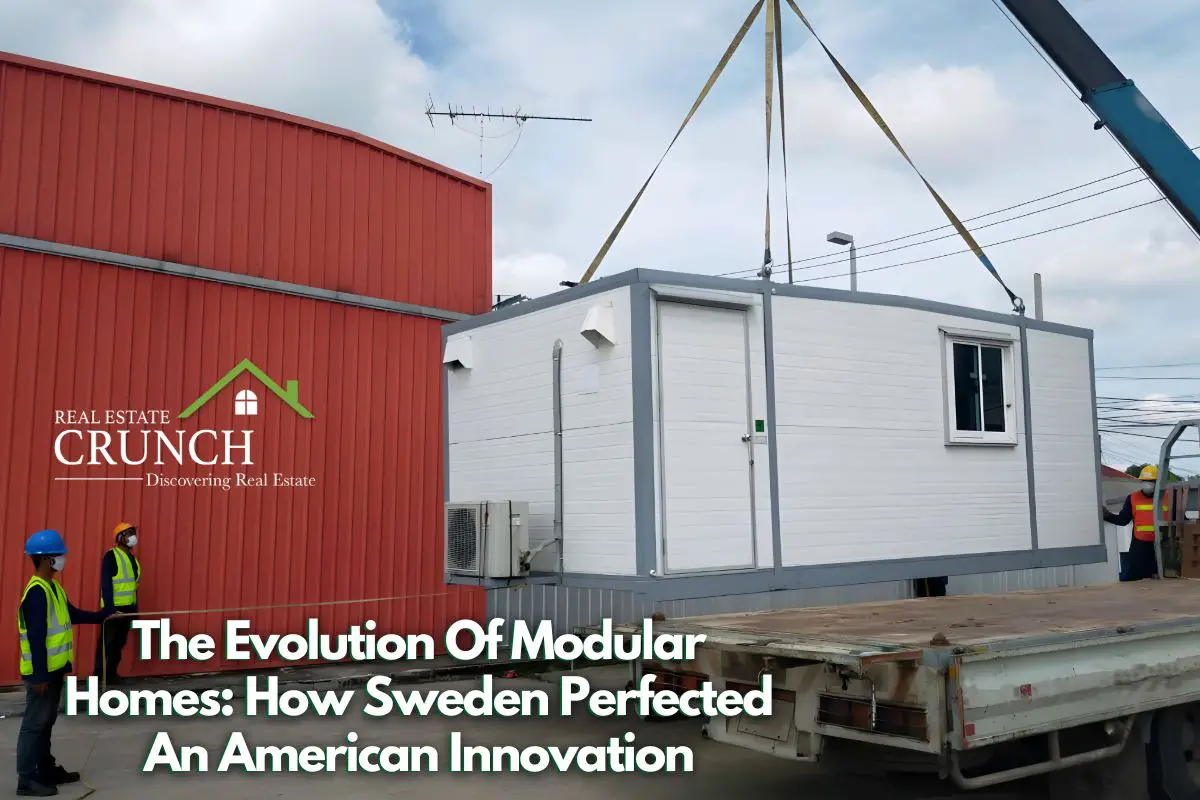Today, Sweden is renowned globally for its leadership in modular home construction, with 80% of all new homes built using this method. Initially, Sweden looked to the United States to learn the fundamentals of modular or factory-built homes.
Swedish experts studied American techniques and then refined and enhanced these methods. Through aggressive innovation and strategic technology implementation, Sweden mastered and advanced the modular home construction process. As a result, the American modular home industry now significantly lags behind Sweden’s, prompting industry leaders and builders to ponder how soon, if ever, they might close the gap.
Table of Contents
- The Evolution Of Modular Homes: How Sweden Enhanced An American Concept
- Swedish Refinement Of American Modular Home Methods
- Related Questions
The Evolution Of Modular Homes: How Sweden Enhanced An American Concept
Sweden is now considered a global leader in modular home construction, with a staggering 80% of all new homes built using this innovative method. This is a sharp increase compared to just 5% in the United States, where modular homes are far less common.
Despite its current dominance, Sweden’s journey in modular construction began with observations and learning from the American industry. Eager to improve upon the methods used in the U.S., Swedish professionals diligently adapted and enhanced these techniques. Their commitment to refining these processes led to significant advancements in efficiency and sustainability, propelling Sweden to the forefront of the modular home market.
Today, as the American modular home sector struggles to keep pace, many speculate on when it will match Sweden’s approach’s sophistication and mastery. This development catalyzes a broader discussion on worldwide innovation and progress in construction techniques.
The American Origins Of Modular Homes
Historically, America was the birthplace of modular home construction, innovating several vital techniques that laid the groundwork for the industry. Many Americans do not realize this, but many of the techniques used in modular housing helped America expand, particularly in the western United States.
Here are some ways that America had origins in the Modular Home Manufacturing:
Balloon Framing Revolution
Invented in 1833, balloon framing used machine-sawn dimension lumber, critical in the expansion across the western United States. This method significantly differed from traditional timber framing and allowed for the rapid erection of walls and structures.
The Advent Of Manufactured Homes
The first modular homes appeared on the American landscape in 1929, known as manufactured homes or part of mobile parks. Initially, these homes didn’t see widespread adoption, capturing only about 3% of the housing market, and were often criticized for their inferior quality.
Even today, manufactured homes and mobile parks are not considered the most desirable real estate type. One problem is that American companies did not improve upon this concept to make it better.
Cookie Cutter Home Designs
The concept of factory-built homes took a more substantial form in the 1920s, spearheaded by companies like Sears Roebuck with their kit homes. These were among the first instances of pre-packaged home designs that could be assembled on-site but suffered from a perception of being monotonous and impersonal.

Swedish Refinement Of American Modular Home Methods
Swedish engineers and companies studied these early American methods and began to refine them, focusing on improving factory automation, enhancing component precision, and reducing waste.
Even as early as the 1960s, Sweden was looking at modular home construction to help alleviate the housing crisis after it occurred. The Swedish public and companies embraced modular building to help speed up housing and make their home building more efficient.
Ways Sweden Has Refined The Modular American Home Manufacturing Methods
Upon studying these foundational American methods, Swedish engineers and companies began to refine them, aiming to improve factory automation processes, enhance component precision, and minimize waste. This led to several advancements:
Collaborative Industrial Practices
Swedish companies foster a collaborative environment that extends across different departments and even between different companies. This synergy helps streamline processes from design to assembly, ensuring that all parts of the production chain work harmoniously towards common goals.
For example, they may not cut the lumber themselves but buy precision-cut lumber from a local source. This allows them to be as efficient as possible.
Lean Manufacturing Techniques
Drawing from experiences in other industries, such as automotive manufacturing from companies like Volvo, Swedish modular home manufacturers employ lean manufacturing techniques. These practices help reduce costs, increase productivity, and maintain high-quality standards by optimizing every step of the production process.
When you go into one of their factories, you can see that the entire manufacturing process is set up as a factory, with each section doing one part of the building process. The building parts quickly and efficiently move through the building and manufacturing process.
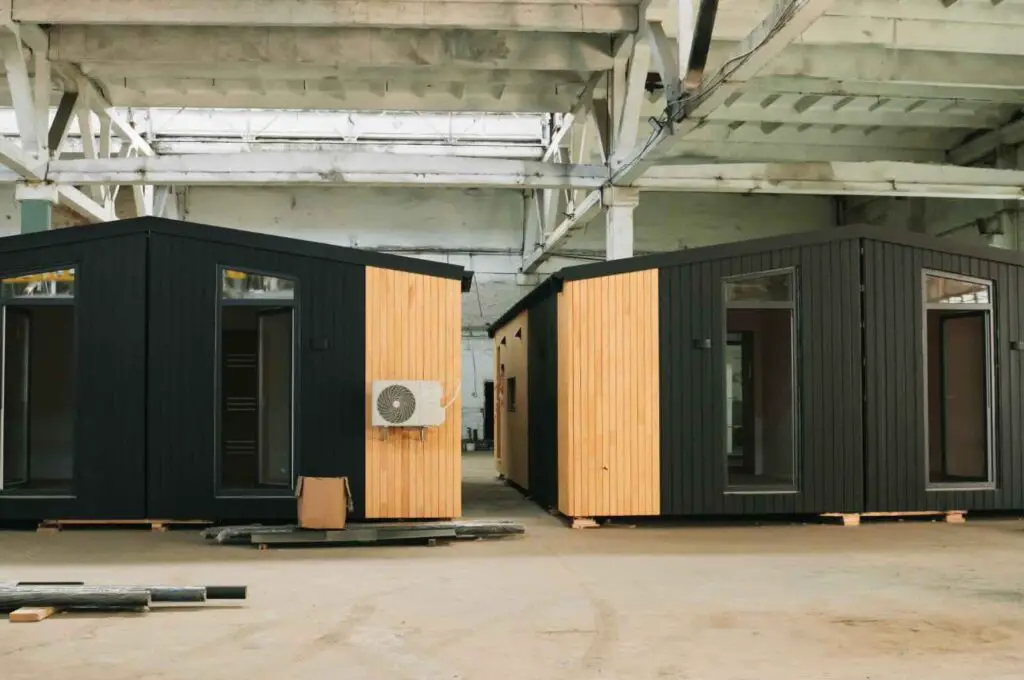
Technological Integration
Swedish firms have greatly enhanced the reliability and efficiency of modular construction through state-of-the-art technology and automated systems. This technology ensures they can produce modular structures quickly and with great precision.
In these factories, every nail, nail gun, or requirement is preprogrammed into the system before manufacturing starts.
Quality And Sustainability Focus
Emphasizing environmental sustainability, Swedish modular homes often use locally sourced, eco-friendly, durable, sustainable materials. This approach supports local industries and promotes a greener construction process.
Like all good modular building factories, due to their production efficiencies, they can also eliminate a lot of wastage.
Regulatory Compliance
In Sweden, modular constructions must adhere to stringent building codes and standards, guaranteeing that the homes are safe, energy-efficient, and resilient. This regulatory environment pushes companies to innovate continually while adhering to high safety and quality standards.
One advantage of many homes they build is that they are built with precision and fit together perfectly. This also means their homes are more energy efficient and withstand harsh winter climates.
High-Level Advanced Automation
Many Swedish modular home factories operate with an exceptionally high level of automation. These factories produce modular homes with remarkable precision using sophisticated robotics and other advanced technologies. This automation extends throughout the production process, from initial cuts to final assembly, ensuring each component fits flawlessly with the next.
The cleanliness and order of these facilities are so maintained that there is hardly any sawdust or debris on the floor— it is so pristine that one could almost eat off the floor. This reflects the efficiency and precision of the automated systems and enhances the facilities’ overall safety and working conditions.
This high-level automation is a cornerstone of why Swedish modular homes are renowned for their quality and durability.
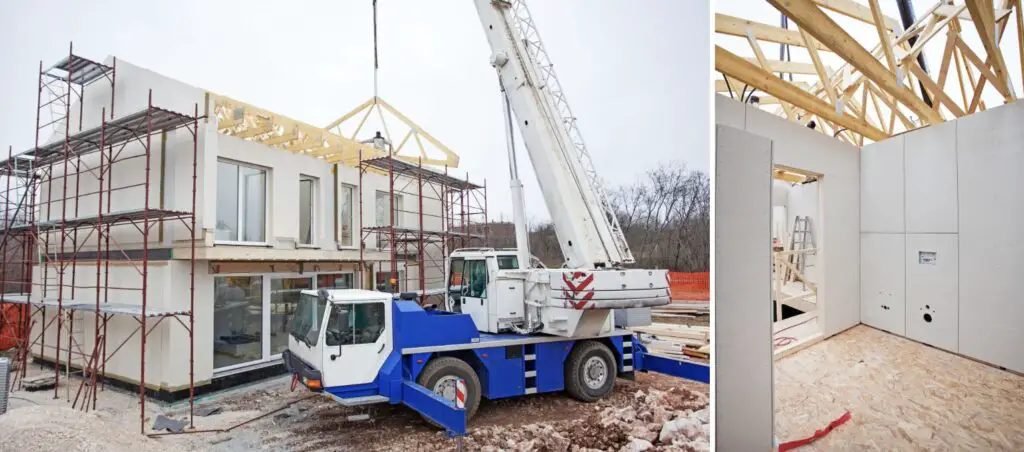
Sweden’s Modular Home Manufacturing: Adhering To The Four Ms
Swedish modular home manufacturers excel by focusing on what is known as the “Four Ms” of manufacturing: Materials, Machines, Methods, and Manpower. This comprehensive framework ensures that every aspect of production is optimized to produce high-quality homes efficiently and sustainably. Here’s how each component plays a crucial role in the manufacturing process:
Materials
- Quality and Sustainability: Swedish manufacturers select high-quality materials that are durable and environmentally friendly. Often sourced locally, these materials reduce the environmental impact and support the local economy.
- Efficiency: The materials are used efficiently, with minimal waste. This is achieved through precise calculations and cutting-edge technology that ensures optimal use of every resource.
Machines
- High-Level Automation: The factories have advanced machinery, including robots that handle everything from framing to installation. This automation allows for high precision in manufacturing and significantly speeds up the construction process.
- Maintenance and Upgrades: Continuous maintenance and regular upgrades keep the machinery in top condition, reducing downtime and ensuring consistent productivity.
Methods
- Innovative Construction Techniques: Swedish modular homes are built using sophisticated methods that improve build quality and efficiency. These techniques include everything from the modular construction method, which allows for rapid assembly, to specific approaches for waterproofing and insulation.
- Lean Manufacturing: Emulating efficiency practices from industries like automotive manufacturing and modular home factories in Sweden, which implement lean manufacturing principles to streamline operations and eliminate waste.
Manpower
- Skilled Workforce: Employees in these factories are highly skilled and regularly trained in the latest construction and manufacturing techniques. This not only enhances the quality of work but also improves worker safety.
- Collaborative Environment: There is a strong emphasis on teamwork and communication within the workforce, which helps troubleshoot issues quickly and efficiently, enhancing overall productivity.
By meticulously reviewing and refining these four areas, Swedish modular home manufacturers ensure superior product quality, faster construction times, and higher overall efficiency. This systematic approach to building sets a high standard within the industry and provides significant advantages in the global housing market.
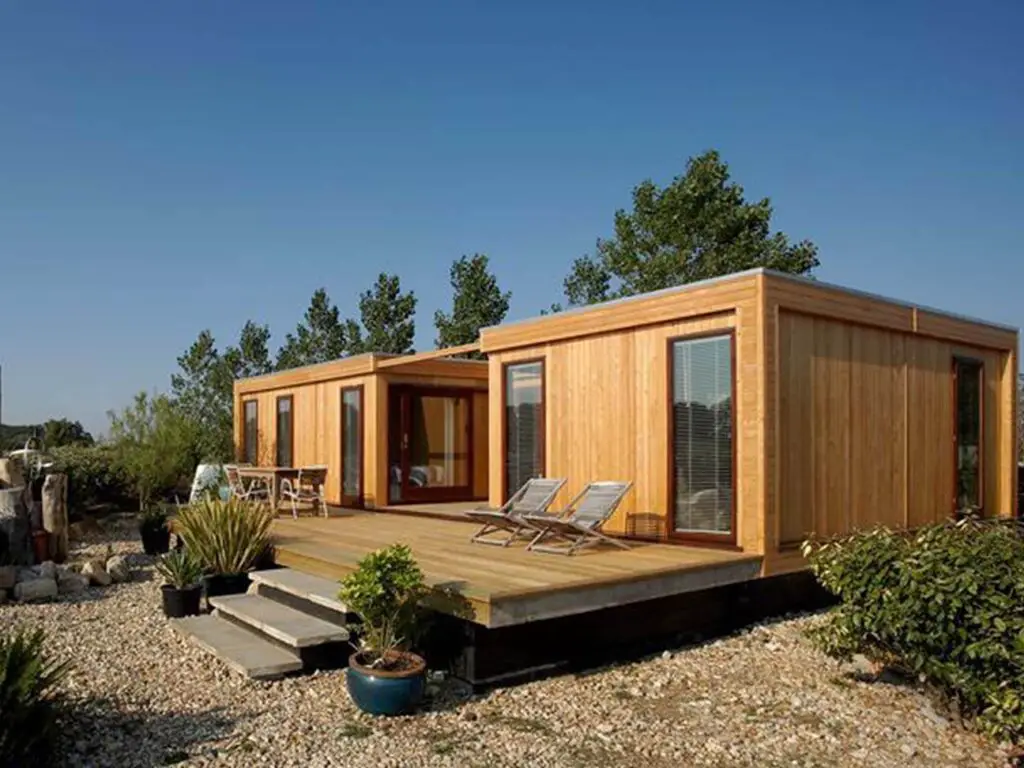
While America provided the initial blueprint for modular homes, Sweden has caught up and set new global standards for the industry. Through strategic innovations, cooperative practices, and a commitment to quality and sustainability, Sweden has transformed modular home construction into a highly efficient, cost-effective, and environmentally sustainable option.
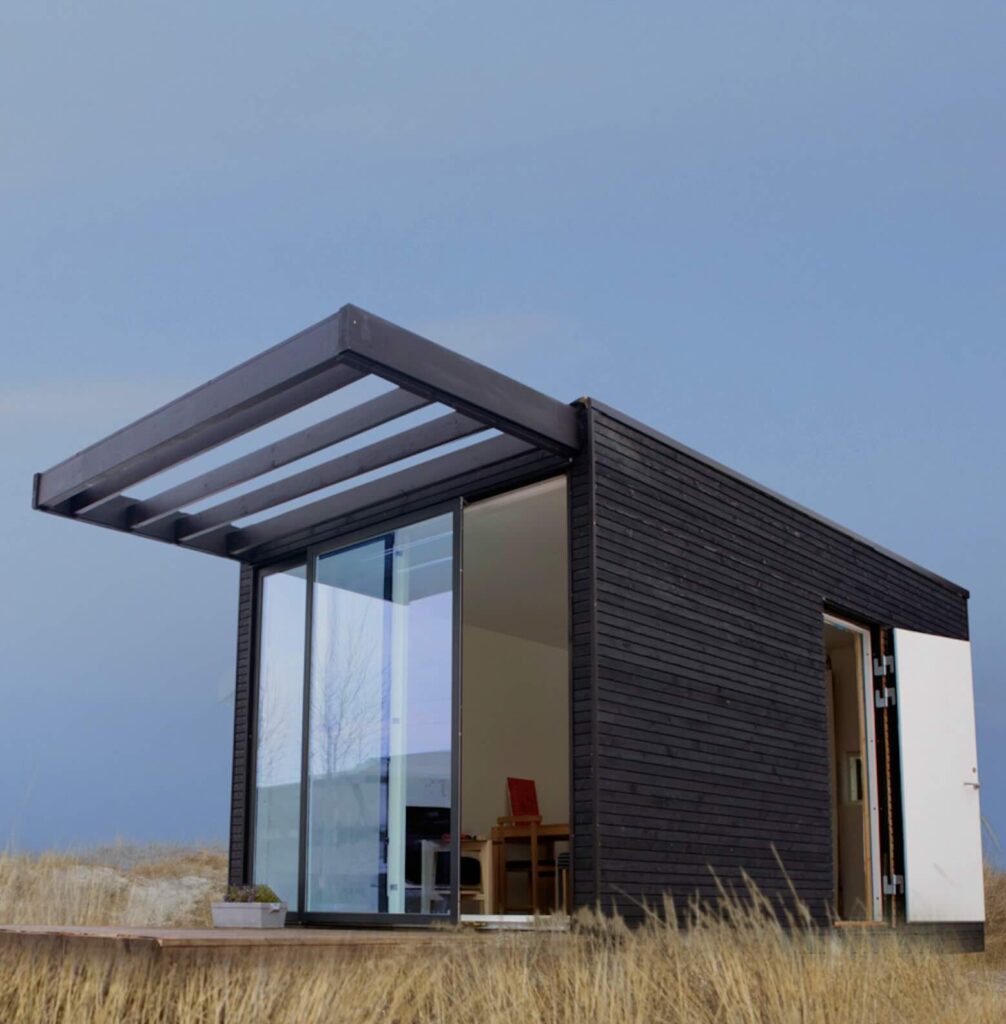
The evolution from American innovation to Swedish refinement and perfection of modular homes is a powerful narrative of technological and procedural advancement, shaping the future of global housing construction and inspiring nations worldwide to rethink construction methodologies.
You Can Listen To Our Podcast About
Has Sweden Perfected Modular Homes? Exploring the Evolution of an American Innovation
Below or By clicking here.

Real Estate Crunch gives you real property and real estate information and advice. We offer a free monthly newsletter; you can sign up for our newsletter by clicking here.
We also have a weekly podcast called “Real Estate Crunch,” found on all major podcast platforms. Listen to our podcast by clicking here.
Follow us on our social media platforms – Facebook and Instagram.
Related Questions
What Happens If You Build On An Easement?
Usually, you can build on an easement as long as it does not interfere with its purpose. You should seek permission from the person with the easement to ensure there is no issue with the easement and what the easement is intended. If unsure, you can also seek legal or other professional advice.
By clicking here, you can read more about What Happens If You Build On An Easement?
What Can I Do With A Utility Easement On My Property?
A utility easement gives the utility company full access to your property for the “good of the community.” The Utility company does not need to get permission to enter your property or work on your property. In fact, due to the utility easement, they could cut down trees, dig holes in your garden, or even not allow you to build an underground swimming pool or plant a tree.
By clicking here, you can read more about What Can I Do With A Utility Easement On My Property?
Who Should Pay Property Tax, Tenant Or Landlord?
A landlord has a legal burden to pay the property tax and not the tenant. Most landlords will include the property tax cost within their rental amount. There are also several other things that tenants should not have to pay for. The property taxes are assessed upon the property’s value, so if the property value goes up, your rental cost may also go up to reflect the increased property tax.
By clicking here, you can read more about Who Should Pay Property Tax, Tenant Or Landlord?

